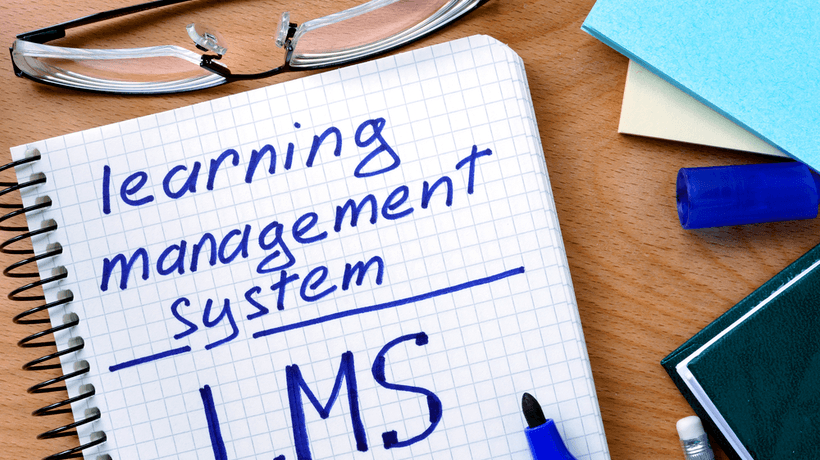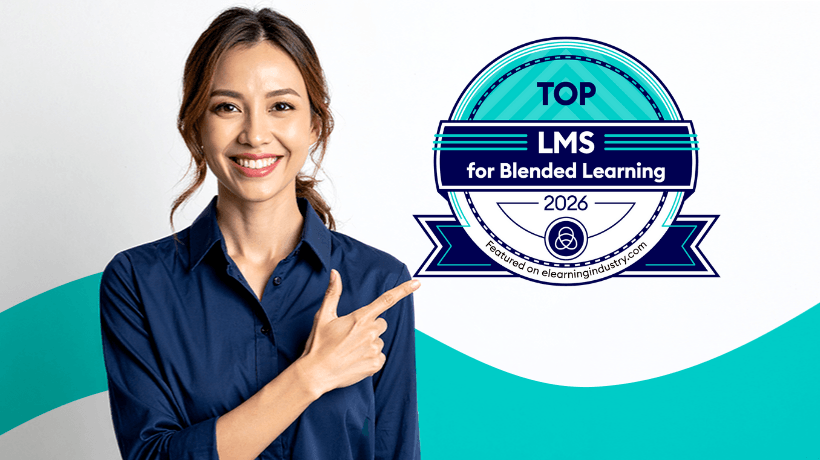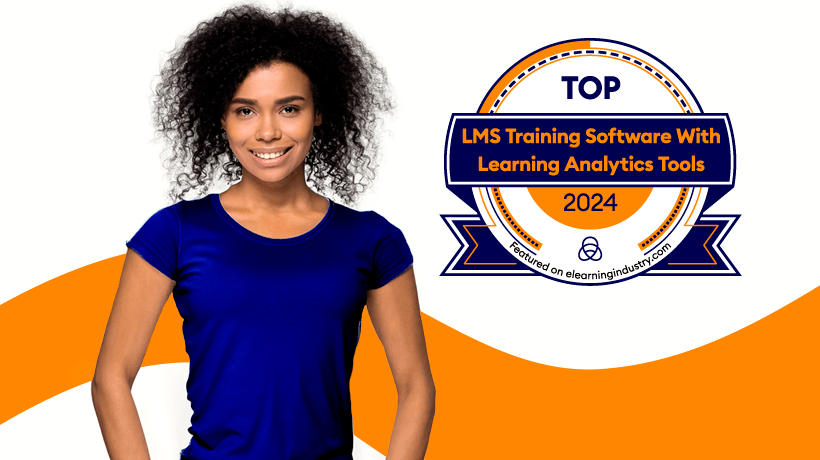Best Learning Management Solutions
Let's face the fact: online learning is replacing the full-time form of acquiring knowledge. Public universities and corporate schools alike use Learning Management System (LMS) software to remain efficient in the remote mode. And despite the criticism, this trend is here to stay.
Let's see how today's eLearning software is made and what the last year's adrenaline rush did for EdTech.
What’s An LMS?
The Learning Management System (LMS) is a software application for administering distance learning courses.
Organizations either use ready-made LMS solutions that they set up to fit their needs or buy custom ones. All LMSs can be grouped into 3 categories:
- Corporate distance learning (this is the fastest-growing)
- Distance learning in the system of higher and secondary education
- Distance learning in state and local governments
Trending LMS Solutions
The LMS market offers a bunch of open source and cloud-based Learning Management Systems. Which type to choose? Depends on goals, scale, and budget.
Open source solutions are good for small businesses and schools, they come with little or no cost and are easy to tweak. However, one should expect all the problems associated with open source software, such as weaker security and limited functionality. These tools are installed on the server and leave all the maintenance, data, and updates to the end user. Moodle, Chamilo, Open edX, Totara Learn, and Canvas are the most popular Learning Management System apps of this type.
A Cloud-based LMS is hosted on the server of the provider that guarantees data security and maintenance. It comes with a higher cost but delivers a wider functionality, making users' lives a whole lot easier.
Usually, cloud-based solutions look better in terms of design and work well for organizations willing to spread the knowledge across multiple locations. Providers' online support takes care of all the technical issues. Docebo, Adobe Captivate Prime, TalentLMS, LearningPool, Skillcast LMS, and Mindflash are some of the popular cloud-based LMSs.
What To Look For In LMS Software
A good piece of learning management software must be able to do at least 5 things:
1. Create Courses
The very minimum includes creating and editing courses and separating classes, tests, and exams. Time limitation, course tracking, and sharing functionality are also a must.
2. Organize Users Into Classes
To spread the materials between different classes or business departments, an LMS must be able to create and edit groups, manage students, learning forums, and the content.
3. Manage The Process And Paperwork
An LMS must be smart enough to analyze and record data, manage documentation, process payments in case the course is paid, send notifications and reminders, etc.
4. Do Branding And Design
There is always a business or a school behind a course, which means that users should be able to add their logo, play with colors, fonts, backgrounds, and images, and customize their URLs.
5. Deliver UX Management
Any school teacher will tell you that student involvement is half of the deal. An LMS can spice up the learning process with gamification, training simulation, and special functionality for collective assignments.
Work With Other Useful Learning Tools
Integrations are crucial for any Learning Management System, the more tools it works with, the more extensive user experience it delivers.
Here are the major integration options:
- LMS + CMS
A Content Management System helps create content, edit, store, and search it. - LMS + video conferencing software
Skype, Zoom, or Google Meet integrated with the LMS will enable easy video conferencing. - LMS + HRIS
With an integrated HRIS, the LMS can track changes in human resources and rearrange the learning processes accordingly. For example, if an employee gets a promotion, the system will automatically update their permissions and schedules. On top of that, it will track their learning progress and competencies achieved. - LMS + CRM
When coupled up with customer relationships management system, an LMS can teach sales teams right from the CRM interface.
LMS Development Standards
Normally, developers create courses for distance learning systems in compliance with the following standards:
- AICC
- SCORM
- IMS
- xAPI (Tin-Can)
AICC
AICC is the very first eLearning standard. It stands for Aviation Industry Computer-Based Training Committee. As the name suggests, AICC was created for aviation courses, but don’t be fooled by the title, these days its field of use is almost limitless.
Due to its long history, AICC received support from many learning systems and therefore remains in demand today. This standard focuses on formalizing the interaction of LMS and systems for creating training modules. This allows the future use of a significant number of training courses, including those created for other standards.
The sets of AICC's technical standards for online courses are called AGRs. The two most wanted ones are:
- AGR-006: regulates all the computer-based training
- AGR-010: refers to exclusively web-based learning courses
Pros:
- The ability to store educational content and LMS on different servers, which makes it more secure than some of its younger competitors.
Cons:
- Somewhat obsolete and therefore complicated data structure. A pioneer and a long-liver, AICC uses HTTP messages, making the implementation a bit more cumbersome. AICC is not getting updated anymore, but it has been around for so long that many organizations still use it for the old times' sake. That's why most platforms can still accept AICC-compliant content.
SCORM
This standard was introduced by the Advanced Distributed Learning Initiative (ADL), a US-based program supported by the government. Its goal is to deliver fast EdTech solutions and keep the costs as low as possible.
SCORM allows ensuring the compatibility of components and the possibility of their reuse. The training material comes in separate small blocks that can be included and reused in different training courses. To make the learning content and the LMS "talk" to each other, SCORM uses JavaScript API.
SCORM entails 3 components: content packaging, run-time, and sequencing; wraps the courses in a self-contained ZIP file, launches courses in a web browser, and navigates the students through the course.
Pros:
- SCORM-based apps are very user-friendly. One doesn’t have to be a programming ninja to create content and manage courses. The system is efficient in terms of recording how many times a course was completed, the number of entries per student, course completion score, and timing.
- SCORM-compliant tools are the most accessible of them all—over 60% of organizations opt for this standard.
Cons:
- Learning content and the LMS have to be stored on the same server, which affects its security.
- It will not work in offline mode and doesn’t look very nice on mobile devices since it uses Flash-based content.
WCAG
WCAG, which stands for Web Content Accessibility Guidelines, is a set of technical guidelines developed by the World Wide Web Consortium. The idea of it is to make web content more accessible to people with disabilities.
According to WCAG standards, the content should be:
- Tangible
Users should be able to see and hear content easily. Therefore, non-textual content must have a textual alternative (for example, multimedia files must be signed). It should also be possible to present web content in a variety of ways, including assistive technologies. - Operable
Users should easily navigate and find content. They must be able to control all functions from the keyboard and take more time to study and perceive the content. Also, the standard makes sure that the content is not too intense to cause epileptic seizures or other physical reactions. - Clear
Content should be legible, understandable, and predictable. Users should be able to avoid and correct mistakes. - Reliable
Compatibility with custom instruments should be maximized.
xAPI (Tin Can)
Tin Can is the youngest and most up-to-date and better-developed set of LMS guidelines. It redefines how some learning experiences are tracked, and these standards have a bright future ahead of them.
In xAPI, the information is processed in the form of a question "Who (subject) did (verb) what (object)?"
- Sam completed Lesson 1
- Anna listened to a podcast
- John borrowed a book
Pros:
- xAPI is gaining momentum now because it’s fresher, simpler, and more flexible than other LMSs. It helps take advantage of mobile learning, too; the system can work in offline mode and use mobile tools such as camera, compass, etc.
- There are a lot more results it can track. Suppose the user wants to create a sophisticated course involving gamification, blended learning, and other complex scenarios. In that case, xAPI can record this type of data too. Thus, it's easier for the owner to analyze and improve courses.
- Higher security.
- It does not require an internet browser.
Cons:
- xAPI is not as popular and widespread as SCORM and AICC, yet.
Bottom Line
Learning software development was lucky to be one of a few industries that benefited from the events of 2020. These days, organizations can choose from a variety of off-the-shelf solutions (both open source and cloud-based) or develop their own ones based on multiple standards. There is no one-size-fits-all solution—your choice will depend on how complex and versatile you imagine your learning program should be.






